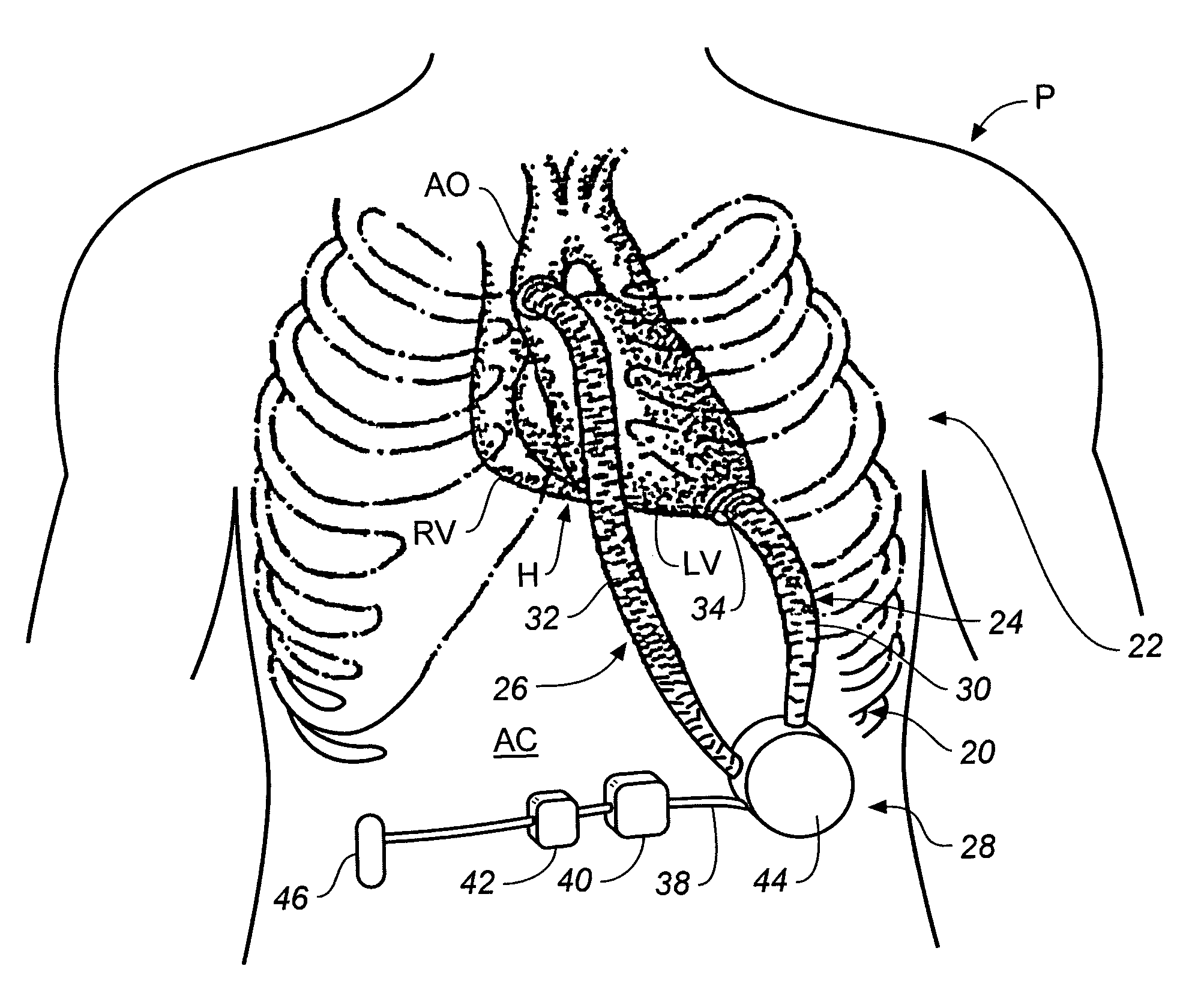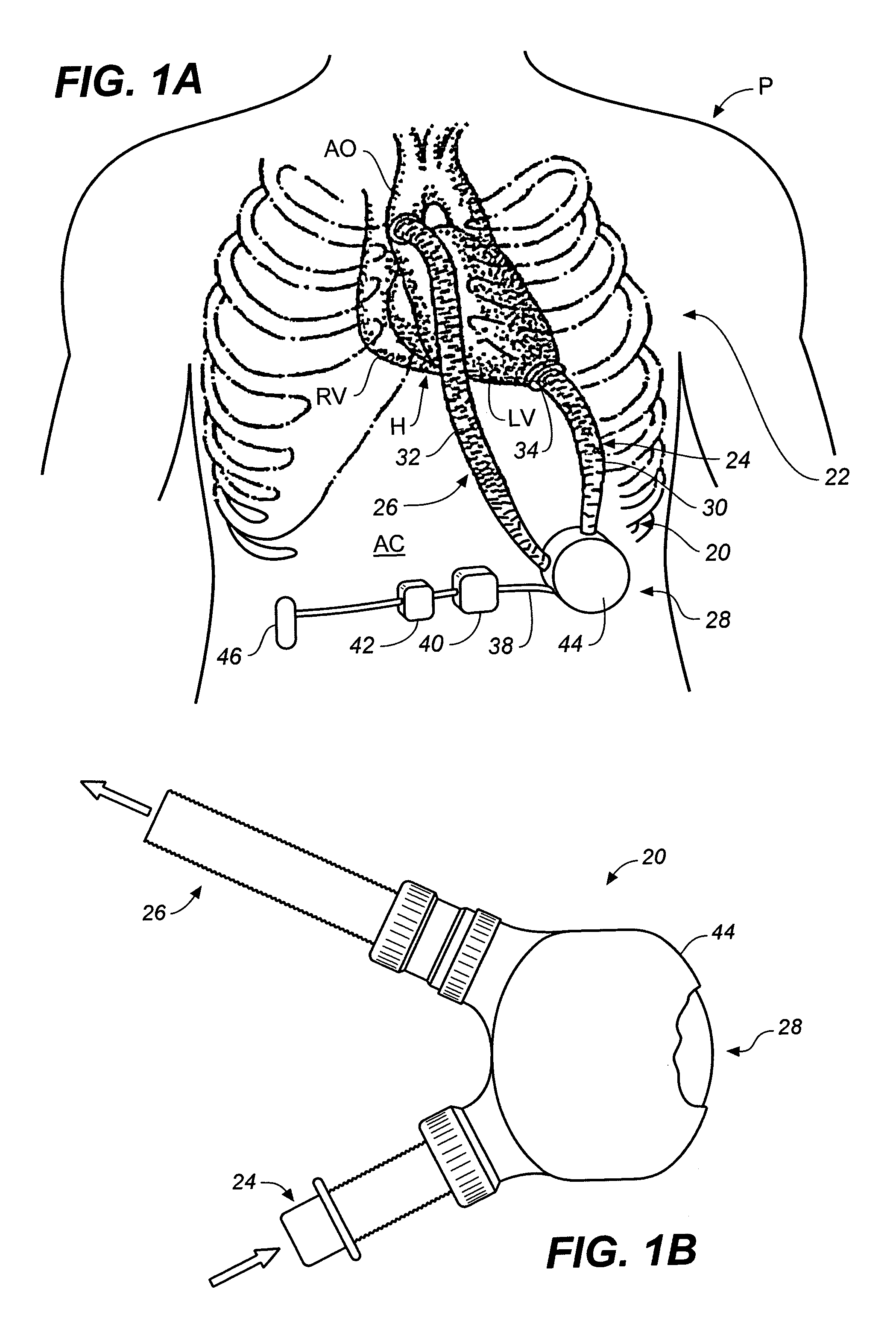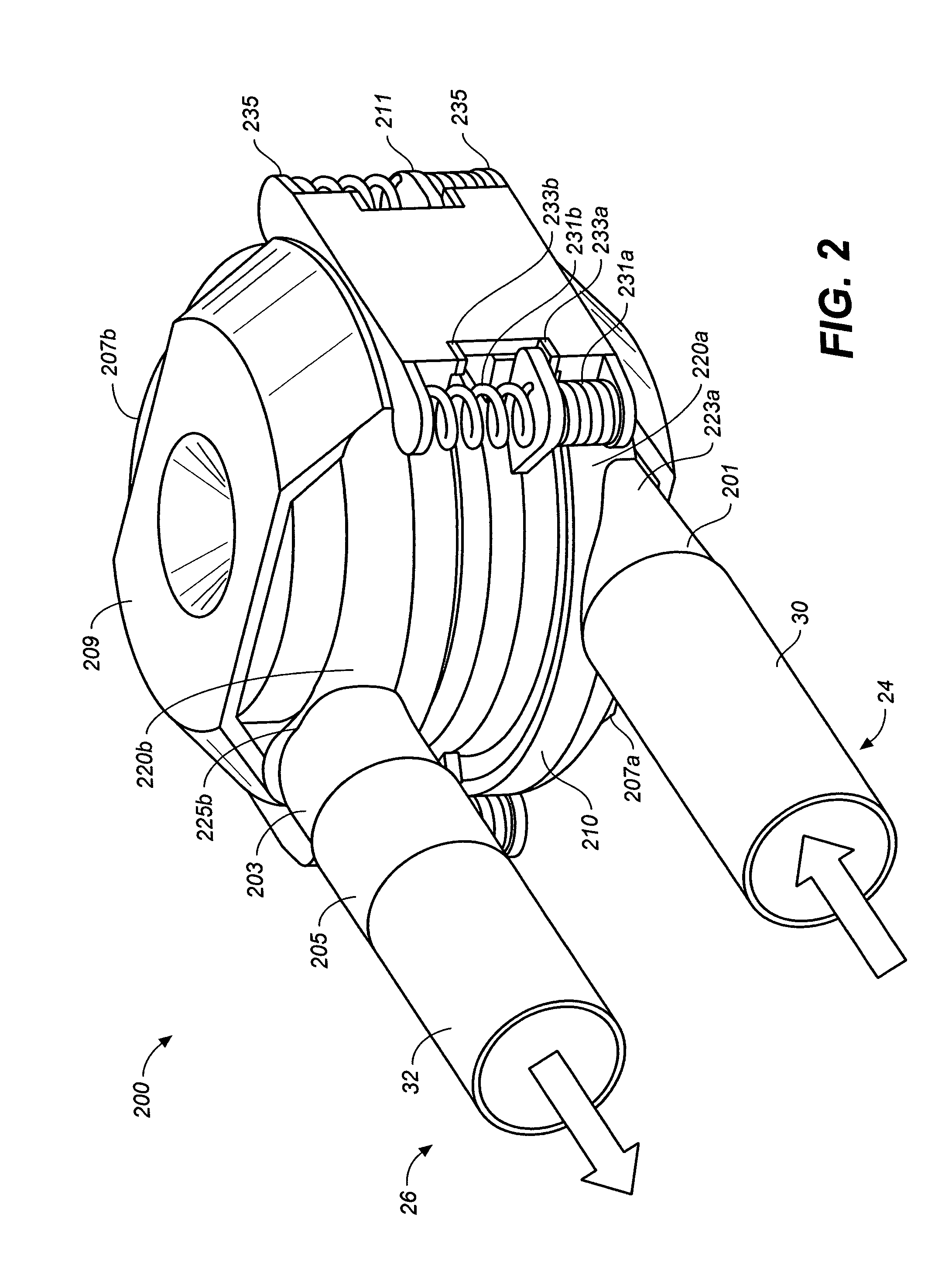Miniature, pulsatile implantable ventricular assist devices and methods of controlling ventricular assist devices
a ventricular assist device and a small size technology, applied in the field of implantable ventricular assist devices, can solve the problems of increasing system complexity, affecting the function of the ventricular assist device, and the disadvantage of skin penetration and associated infection risk, and achieve the effects of reducing the risk of infection, and improving the quality of li
- Summary
- Abstract
- Description
- Claims
- Application Information
AI Technical Summary
Benefits of technology
Problems solved by technology
Method used
Image
Examples
Embodiment Construction
[0072]With reference first to FIG. 1A, a perspective view of a ventricular assist system 22 of the present invention is shown connected to a heart H of a patient P for the assist of a left ventricular LV. FIG. 1A shows a living human host patient P in fragmentary front elevation view, and with parts of the patient's anatomy shown in phantom or removed solely for better illustration of the salient features of the present invention. A pumping portion 20 of ventricular assist system 22 is surgically implanted into the patient's abdominal cavity AC and connected to the heart H with cannulation. The cannulation includes an inlet conduit 24 communicating blood from the patient's left ventricle LV into the pumping portion 20, and an outlet conduit 26 communicating blood from the pump 20 to the patient's aorta AO. The pumping portion 20 of ventricular assist system 22 may also be implanted in the chest cavity of the patient with similar cannulation to the LV and the patient's aorta.
[0073]Fo...
PUM
 Login to View More
Login to View More Abstract
Description
Claims
Application Information
 Login to View More
Login to View More - R&D
- Intellectual Property
- Life Sciences
- Materials
- Tech Scout
- Unparalleled Data Quality
- Higher Quality Content
- 60% Fewer Hallucinations
Browse by: Latest US Patents, China's latest patents, Technical Efficacy Thesaurus, Application Domain, Technology Topic, Popular Technical Reports.
© 2025 PatSnap. All rights reserved.Legal|Privacy policy|Modern Slavery Act Transparency Statement|Sitemap|About US| Contact US: help@patsnap.com



